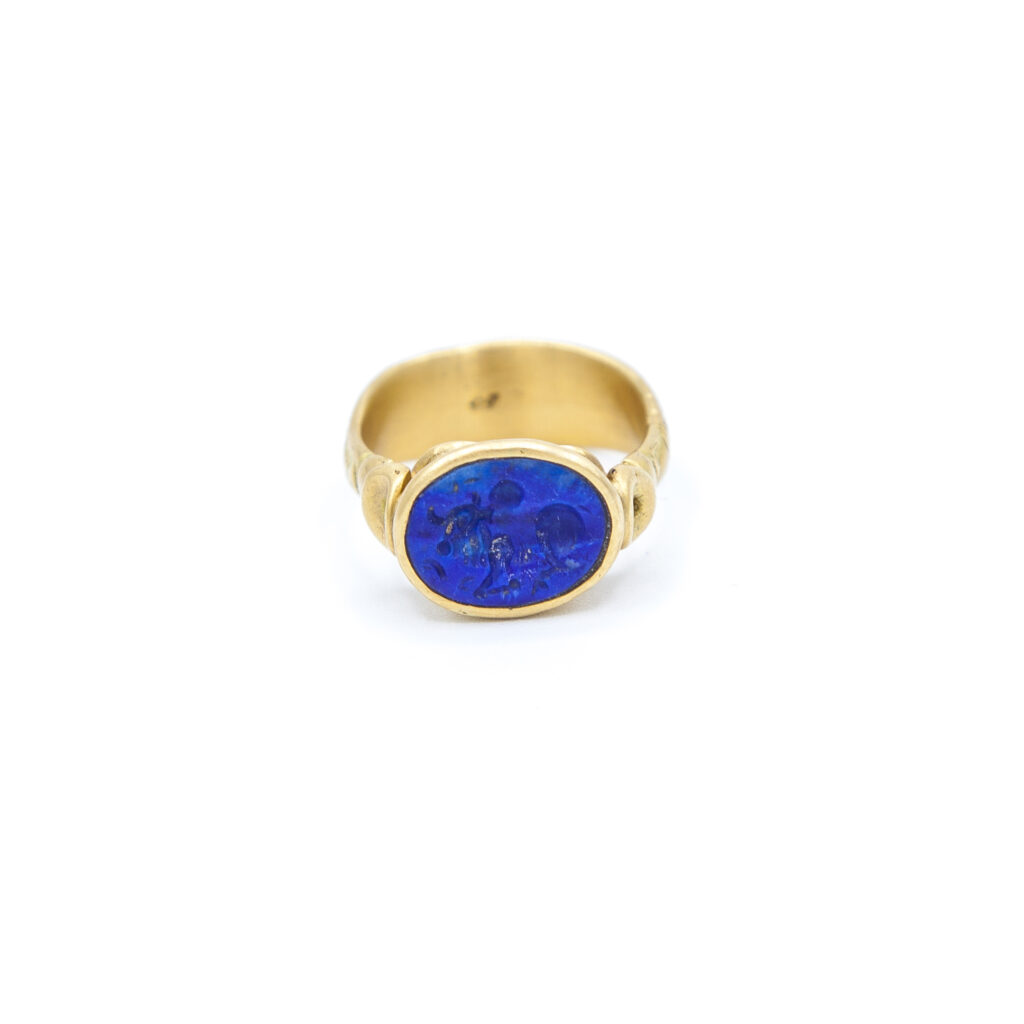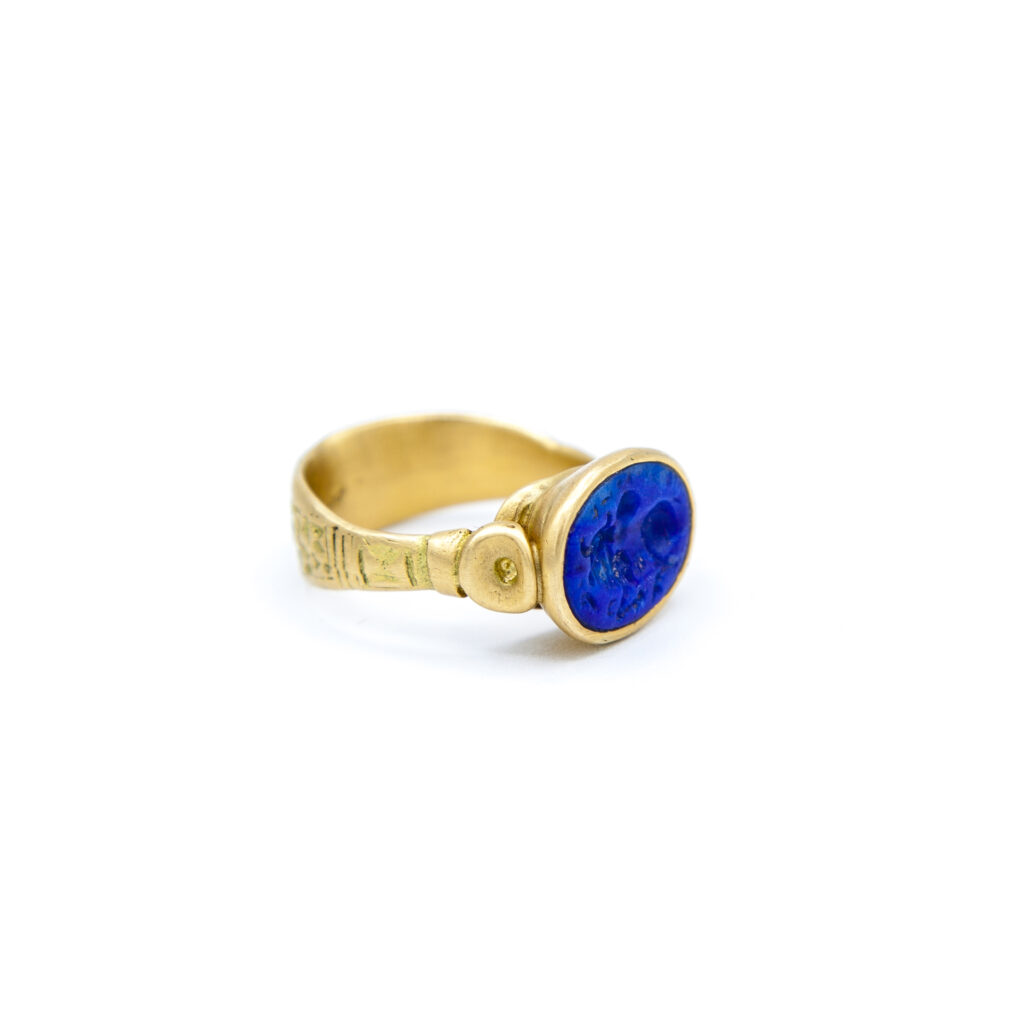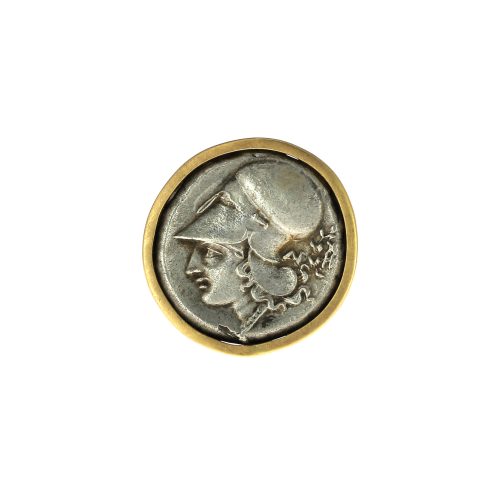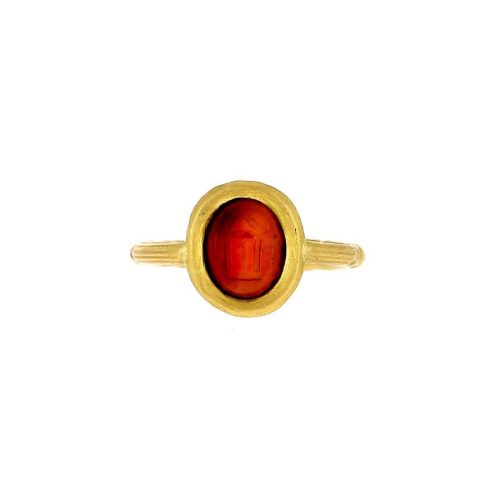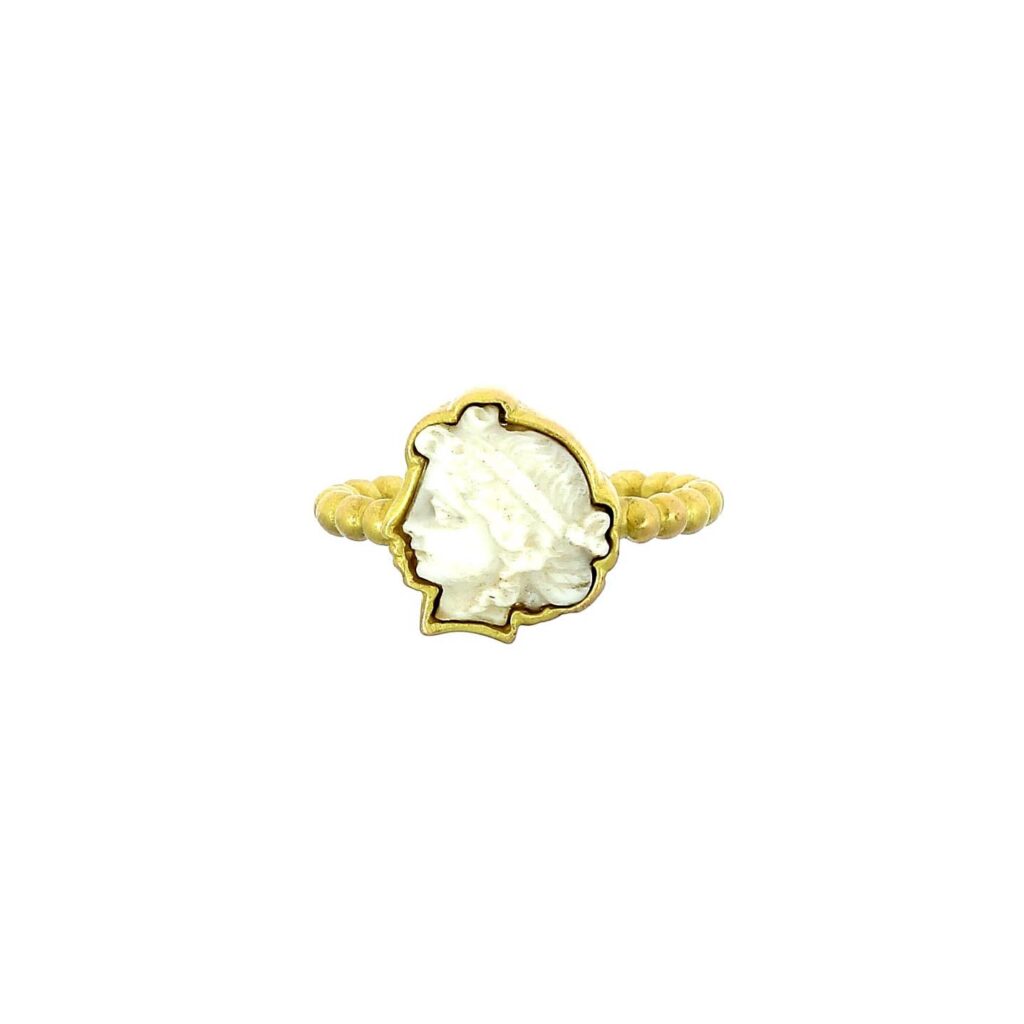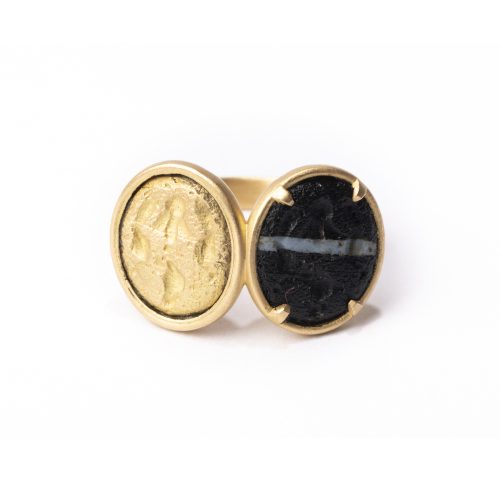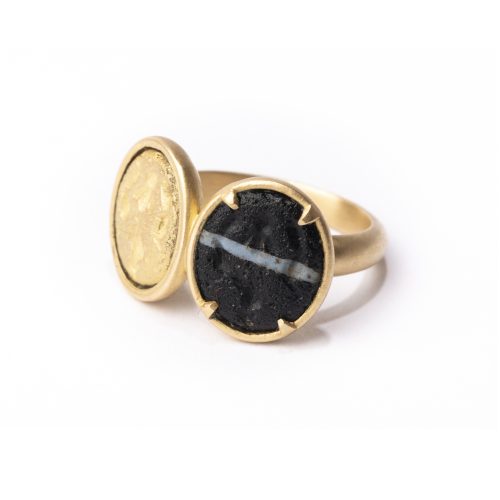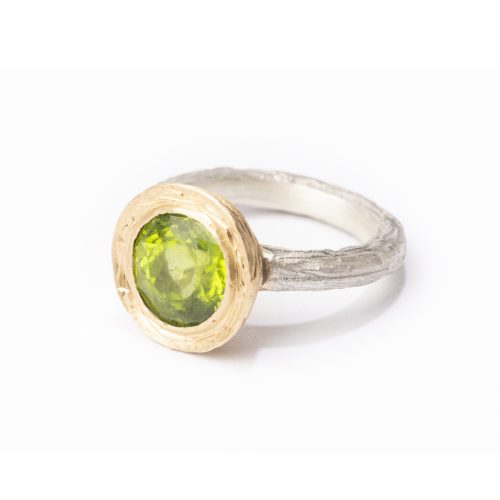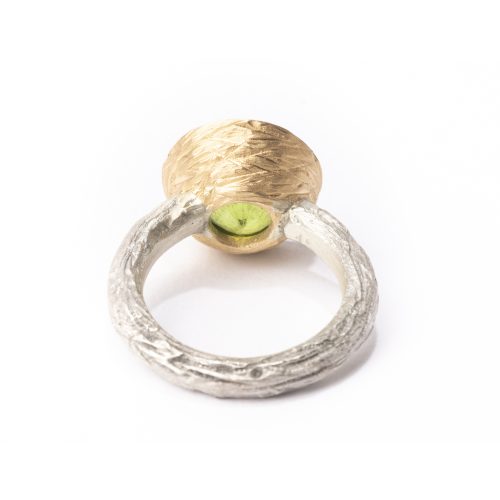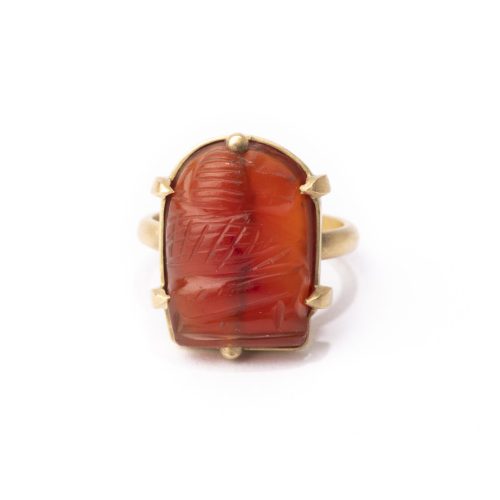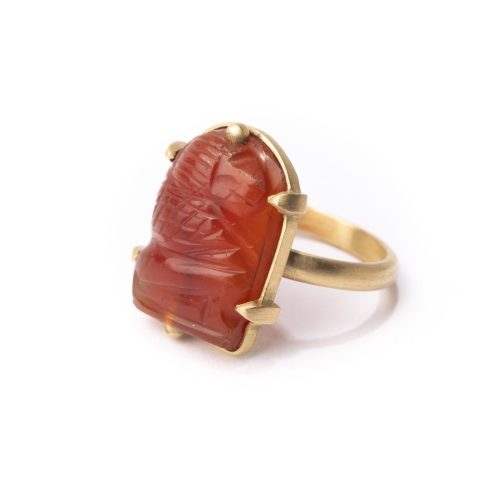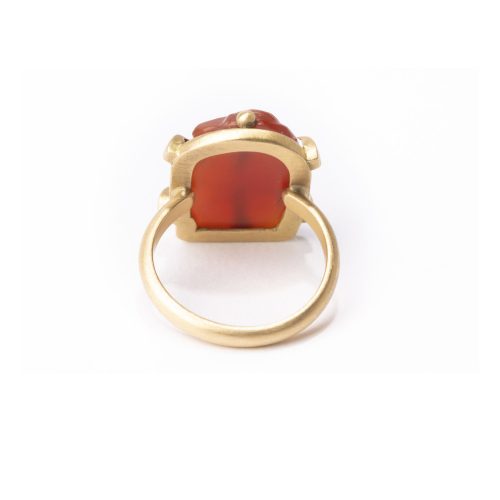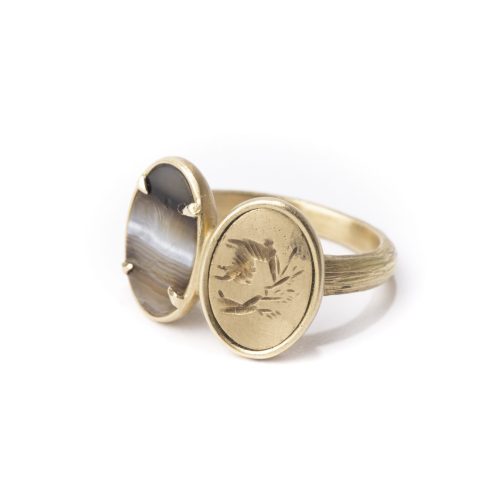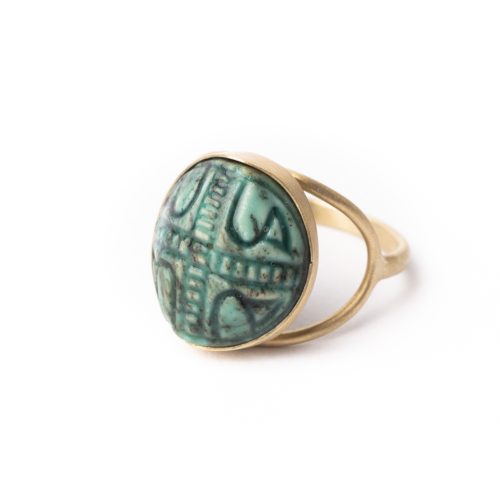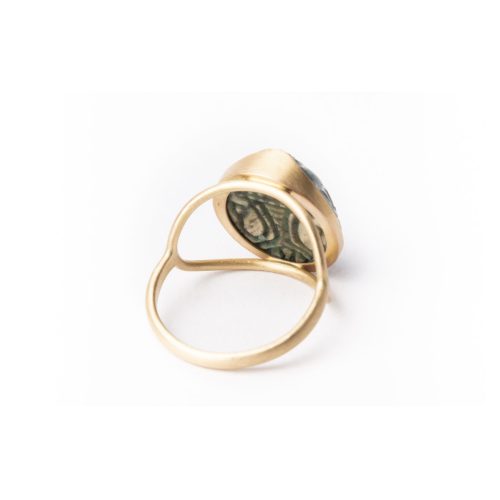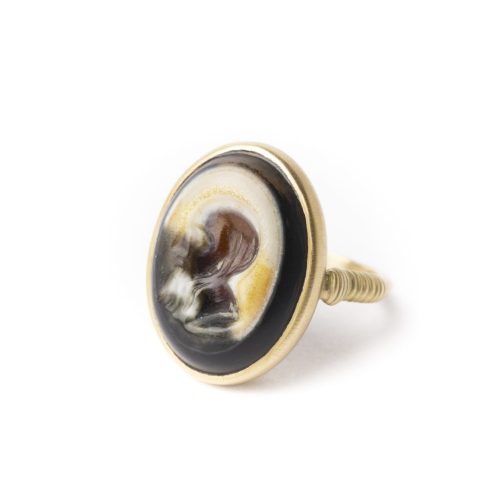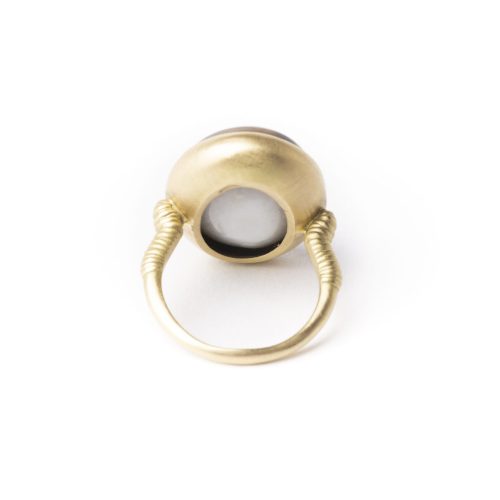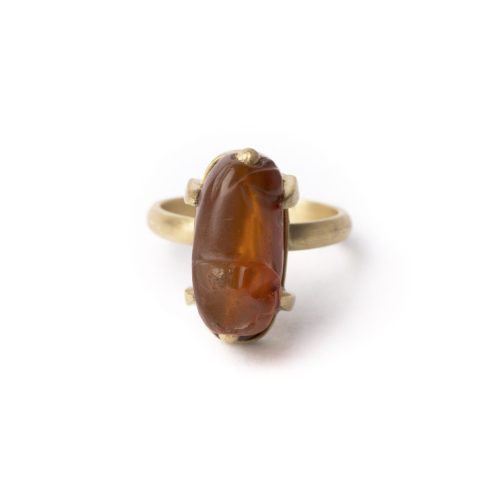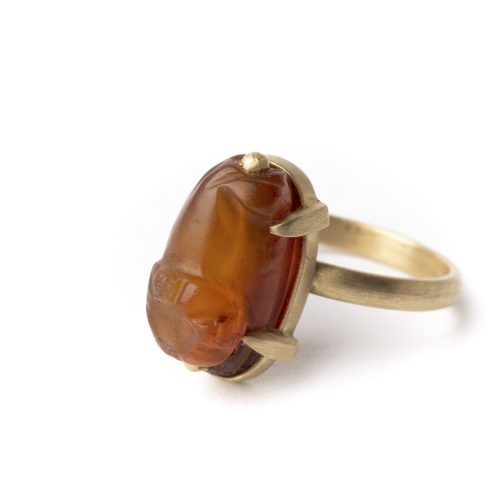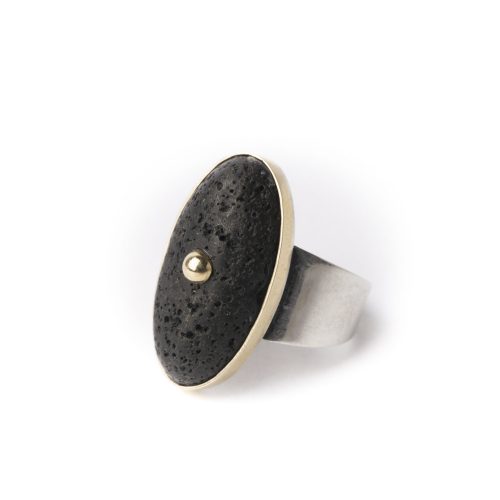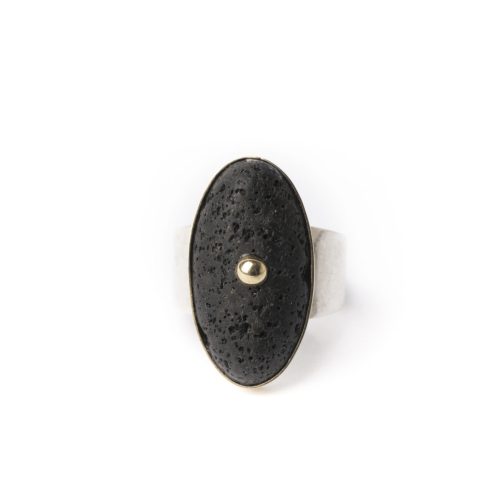Rings
Antique rings and exceptional jewelry in Paris
Prices upon request
Intaglio rings
Glyptics, from the Greek gluphéin (“to engrave”), is the art of intaglio engraving. Originating in the Near East, particularly in Mesopotamia with the cylinder seals of the third millennium BCE, it then developed in Egypt in the form of scarabs, then in Greece in various semi-precious stones, before flourishing in Rome, where the cameo, engraved in relief, also appeared. In ancient times, intaglios were most often set in rings and used as personal seals or stamps.
In this tradition, I create unique and exclusive jewellery, entirely handcrafted and resolutely contemporary. I work with amulets, coins and intaglios from ancient civilisations — Greece, Babylon, Egypt, Rome and Mesopotamia.
Each piece is carefully evaluated, its integrity preserved — no glue, no drilling — then transformed into a luxury piece of jewellery, becoming a talisman ring where ancient heritage meets modern elegance.
Roma
Piece depicting on the obverse the helmeted head of Roma, in silver and set in 18K gold.
The Phrygian helmet is adorned with a griffin’s head, symbolizing victorious Rome.
The X on the left is a mark of value, indicating that one denarius was worth ten asses, or ten copper coins. This type of denarius was struck almost exclusively in Italy between 215 and 140 BC, before new iconographic types began to appear.
Rome, 215–140 BC.
Singe en cornaline
Carnelian stone depicting Thoth.
Set in an 18K gold claw mount.
Thoth is the son of Horus and Seth. The birth of the moon is linked to the appearance of the Eye of Horus and the coming into being of the god Thoth.
He acts as arbiter among the gods, protects Isis during her pregnancy, and heals her son Horus.
He is depicted as a baboon or an ibis.
Egypt, New Kingdom to Roman period, 1580–30 BC.
Scarabée vert d’eau
Green lapis lazuli scarab.
Set in an 18K gold mount.
The word scarab, kheper, is used to write the verb “to become” and to denote the coronation of the king. The scarab thus symbolizes the daily rebirth of the sun. Protector of the living, it also embodies rebirth for the dead.
Egypt, New Kingdom to Ptolemaic period, 1580–367 BC.
Bague Senet
Ring composed of a Senet game die, cylindrical in shape, carved in lapis lazuli.
Senet, comparable to our modern game of the goose, was played on a board of thirty squares. It was highly prized by the aristocracy and often depicted in frescoes, where a pharaoh, queen, or noble is shown playing with a god — symbolizing their passage to the afterlife and their right to enter the realm of Osiris.
Egypt, New Kingdom to Roman period, 1550–30 BC.
Camée précieux
Cameo depicting a woman’s profile, set in 18K gold. Like the intaglio, the cameo belongs to the art of glyptics. Unlike intaglios, which are engraved in hollow, cameos are carved in relief.
The term cameo comes from the Italian “cameo”, likely referring to the camaïeu of colored layers in the stones used.
Its golden age reached its height under Emperor Augustus, in the 1st century AD.
Plastron diamanté
Ancient coin rings
The first currency appeared around 650 BC in the Mediterranean basin. Its inventor is believed to be Gyges, king of Lydia, a kingdom in Asia Minor bordering the Aegean Sea. Long before that, China had been using forms of currency since the end of the Neolithic period, notably cowrie shells, which were used as a medium of exchange.
Some ancient coins were minted in quantities of only a few hundred, others in the thousands. They have survived through the ages, bearing witness to the continuous trade between people, close to art and beauty. Simple everyday objects have become works of art, imbued with history and symbolism.
Alexandre le Grand
Ring featuring a silver tetradrachm of Alexander the Great wearing the horn of the god Ammon; on the reverse, Athena, goddess of war and wisdom. Set in 18K gold.
Alexander was born in 356 BC, the son of Philip II, king of Macedon, who was assassinated in 336. At the age of 20, Alexander embarked on a series of conquests, advancing through Asia to the Indus, and triumphing in Anatolia, Lebanon, Egypt, and Persia, founding numerous cities along the way.
His epic journey ended abruptly in Babylon, where he succumbed to a sudden fever in 323 BC, leaving no heir.
Thrace, 306–282 BC.

